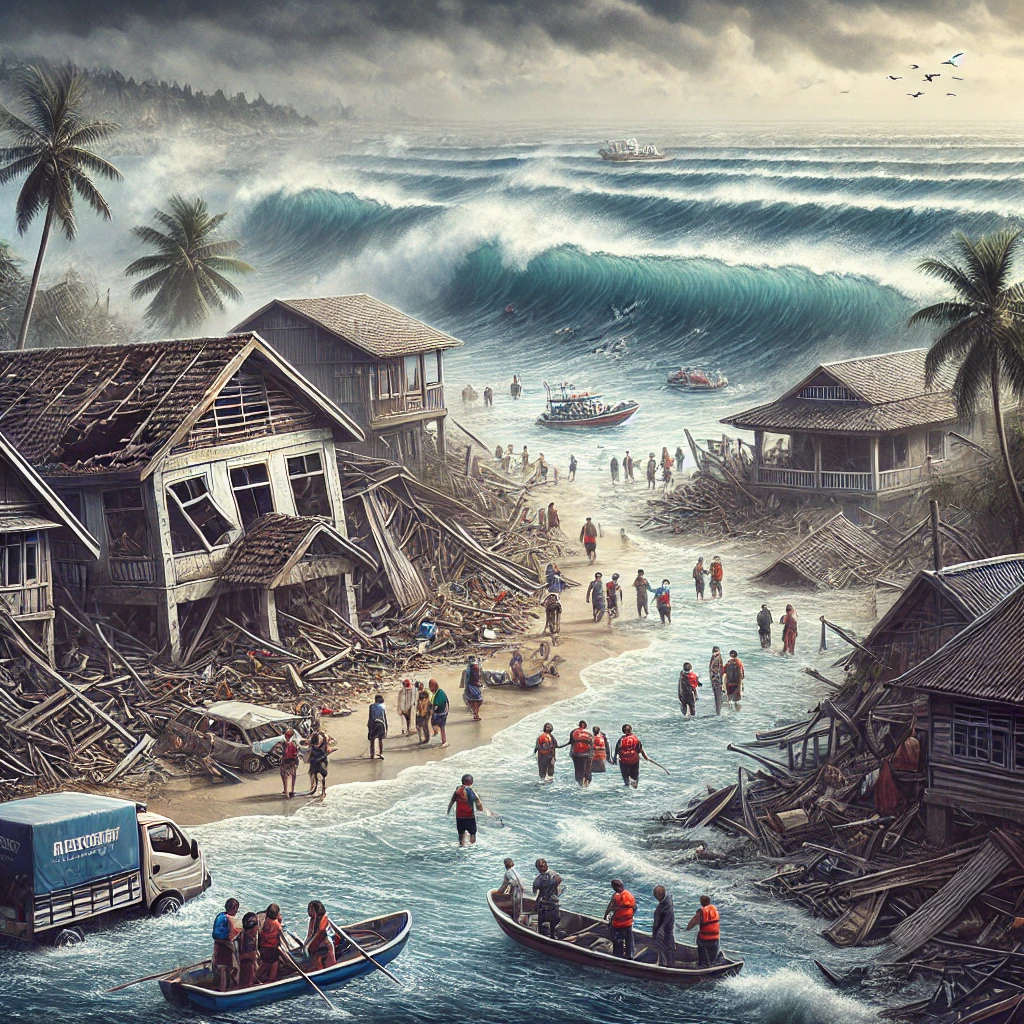On December 26, 2004, a massive undersea earthquake off the coast of Sumatra triggered a deadly tsunami that swept across the Indian Ocean. This disaster affected 14 countries, killing an estimated 230,000 people and displacing millions more. The 2004 Indian Ocean tsunami remains one of the deadliest natural disasters in modern history, and it sparked an unprecedented international humanitarian response.
The Earthquake and Tsunami
The 9.1–9.3 magnitude earthquake struck deep beneath the Indian Ocean, releasing energy equivalent to 23,000 Hiroshima atomic bombs. This sudden shift triggered a massive tsunami, referred to as the Indian Ocean Tsunami, with waves reaching up to 100 feet. Coastal areas in Indonesia, Thailand, Sri Lanka, India, and other countries were hit within hours, with some locations having little to no warning.
Human and Environmental Impact
The impact was devastating. Thousands of coastal communities were wiped out, leaving millions of survivors without food, clean water, or shelter. The environmental damage was equally severe, as saltwater intrusion and erosion destroyed farmland, coral reefs, and coastal ecosystems. Entire towns and infrastructure were reduced to rubble, and local economies were shattered, affecting fishing, agriculture, and tourism for years, all due to the Indian Ocean Tsunami.
The Global Humanitarian Response
The scale of the disaster triggered an outpouring of international aid and humanitarian support. Countries, non-governmental organizations, and individuals around the world responded quickly, providing billions of dollars in aid. Relief efforts included food distribution, medical care, shelter construction, and psychological support for survivors. The United Nations and various NGOs coordinated massive relief operations, with rescuers and supplies dispatched to the hardest-hit areas affected by the Indian Ocean Tsunami.
Long-Term Recovery and Reconstruction
Rebuilding affected regions took years, as the scope of destruction required extensive planning and resources. Recovery efforts focused on constructing tsunami-resistant infrastructure, rebuilding homes and schools, and restoring economic stability through vocational training and business support. Countries in the region also improved early warning systems to better prepare for future tsunamis, including any potential Indian Ocean tsunami, with a focus on educating coastal communities on evacuation procedures.
Lessons and Legacy
The 2004 tsunami underscored the importance of early warning systems, international cooperation, and community resilience in disaster management. The event led to the development of the Indian Ocean Tsunami Warning System, a network of seismic stations, buoys, and communication systems designed to detect and warn of tsunamis. This tragic event also brought attention to the critical role of global humanitarian aid in helping communities recover and rebuild.
Conclusion
The 2004 Indian Ocean tsunami stands as a reminder of the destructive power of natural disasters and the strength of global unity in times of crisis. The humanitarian response helped millions of people rebuild their lives and paved the way for improved disaster preparedness worldwide.

